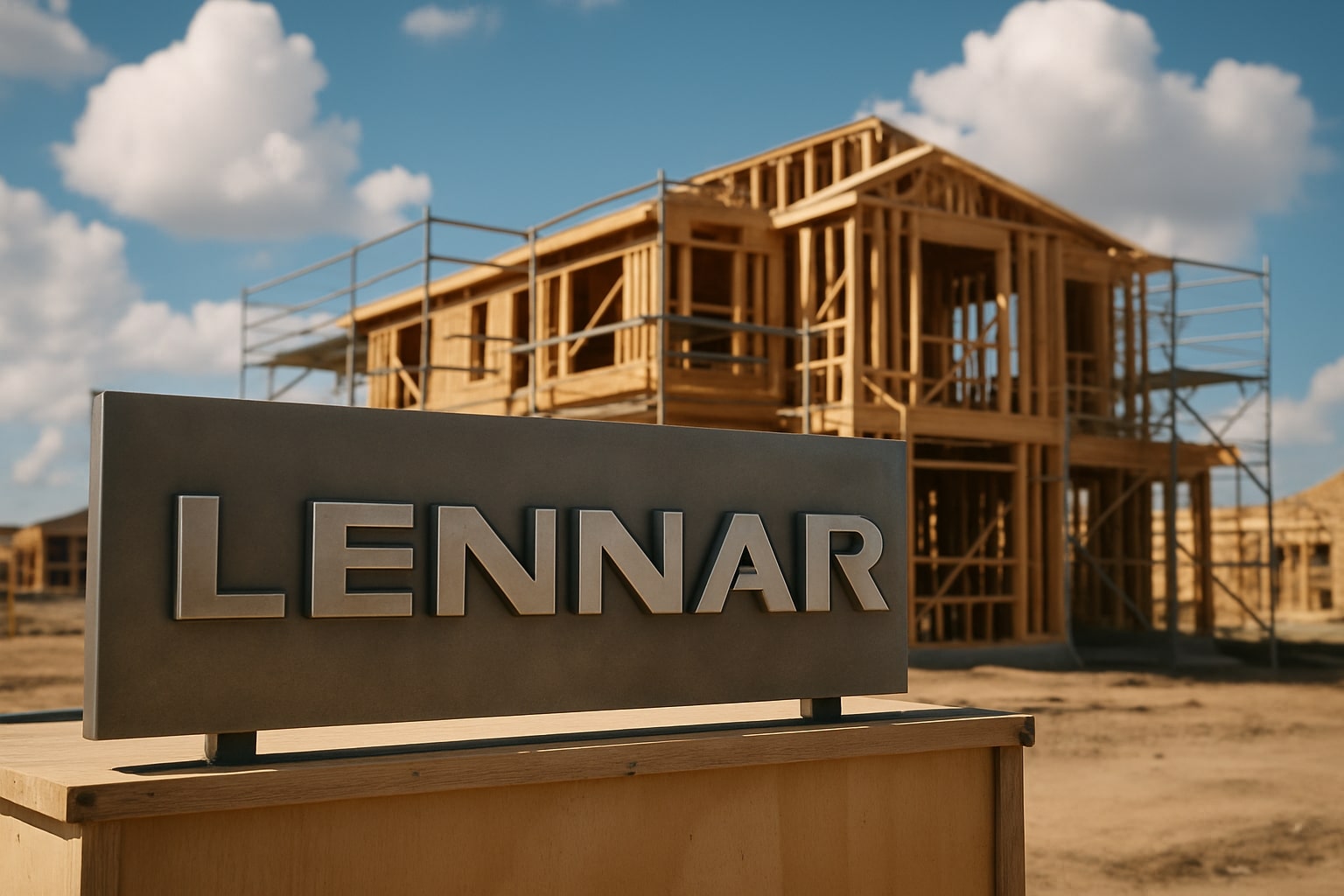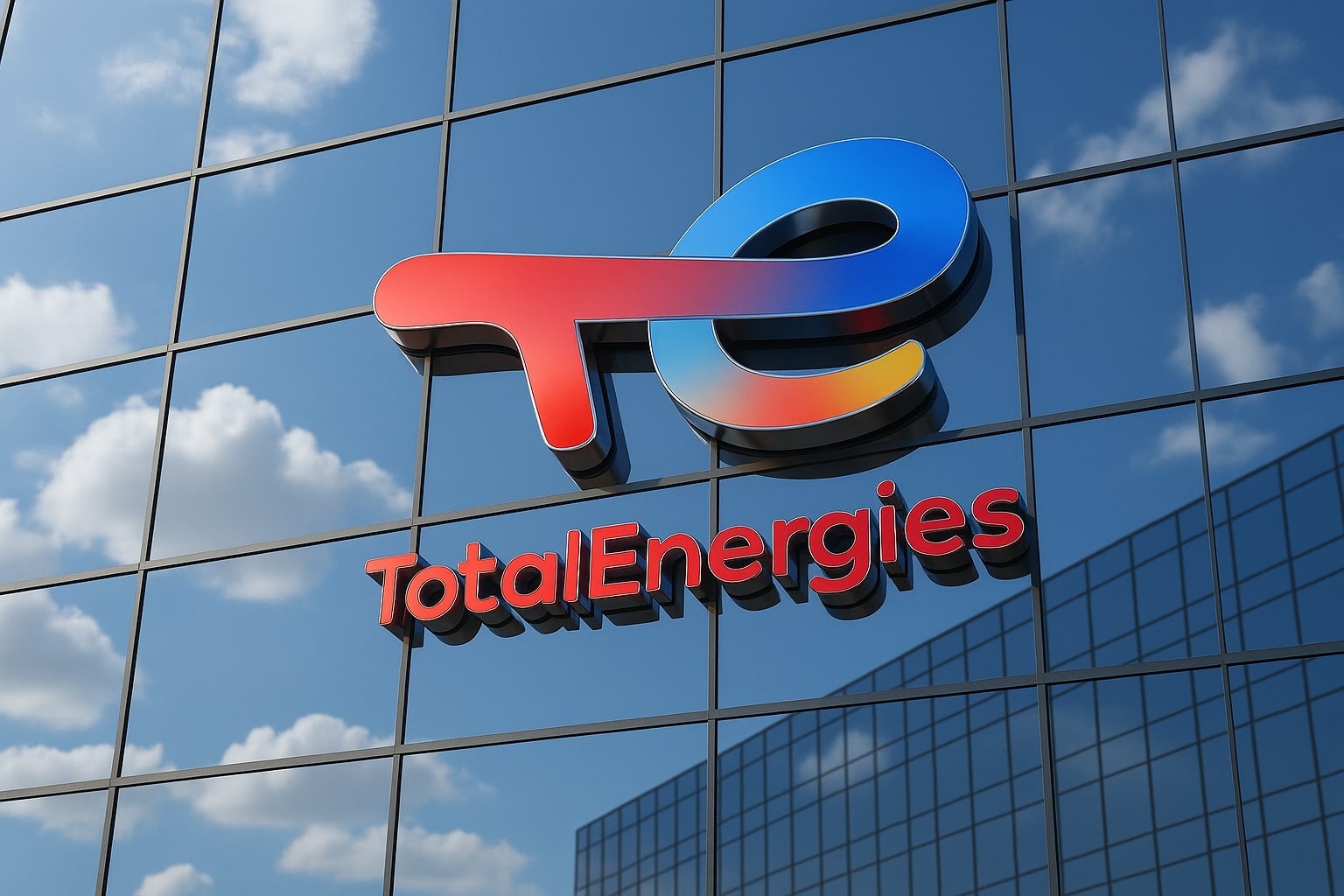
Lennar Stock Price Forecast - LEN Steadies at $125.85 as Margins Compress 49% and Buffett Expands $800M Position
Lennar’s Q3 shows a 49% profit drop and heavier incentives, but its $7.46B cash, land-lite model, and 98% controlled lots keep it positioned for a housing rebound as analysts split between $92 and $161 targets | That's TradingNEWS
Lennar (NYSE:LEN) Faces Margin Compression and Slower Conversions as Housing Market Cools, But Operational Efficiency and Land-Lite Strategy Anchor Long-Term Value
Lennar Corporation (NYSE:LEN) closed at $125.85, inching up 0.02% despite mounting macroeconomic headwinds and clear margin pressure across the U.S. housing sector. The homebuilder remains one of America’s largest, with operations spanning 26 states and 75 markets, and an annual revenue base of $8.81 billion for Q3 2025 — down 6.43% year-over-year. While the near-term backdrop shows declining profitability and weaker demand, the company’s structural advantages in cost management and capital efficiency continue to reinforce its long-term investment appeal.
Earnings Erosion Signals Market Saturation and Affordability Strain
The latest quarter underscores a sharp contraction in profitability for Lennar (NYSE:LEN). Net income declined 49.17% year-over-year to $590.97 million, while earnings per share dropped nearly 48.72% to $2.00. The company’s net profit margin fell to 6.71%, a significant drop from 12.3% a year earlier, as elevated incentives and weaker pricing weighed on margins. Despite steady demand for affordable housing, the company’s decision to increase incentives to 14.3% of the home’s sale price, up from 10.2% last year, has reduced profitability even as it maintained volume.
Revenue at $8.81 billion marked the third consecutive quarter of decline, reflecting not only affordability challenges but also declining conversion rates as buyers remain cautious despite lower mortgage rates. Management’s reduced delivery guidance — from 86,000 units to a range of 81,500–82,500 — signals that the near-term recovery in housing demand is likely to remain muted. Meanwhile, the average sales price per home fell to $383,000, down 9% year-over-year from $422,000, confirming that Lennar is prioritizing volume stability over price expansion.
Gross margin contracted to 17.5%, compared to 22.5% in Q3 2024, driven by aggressive discounting and rising incentives. Analysts expect margins to remain around this depressed level through Q4 2025, leaving little room for earnings improvement until affordability stabilizes.
Operational Excellence and Land-Lite Strategy Support Structural Resilience
Lennar’s core strength remains its operational efficiency. The company has achieved ten consecutive quarters of declining construction costs, with Q3 2025 costs down roughly 3% year-over-year — their lowest level since 2021. Cycle times improved again, with the average home completed in 126 days, a 10% year-over-year improvement, marking an all-time operational record. These faster builds enhance capital efficiency, lifting inventory turns to 1.9x, and allow cash redeployment into new projects at a faster rate.
Lennar’s land-lite model has also become a cornerstone of its resilience. By controlling 98% of homesites through land options, compared to 81% a year earlier, Lennar has dramatically reduced exposure to land price volatility. This strategy enables flexibility in expansion while limiting large upfront cash outlays and potential write-down risks. Owned homesites now represent only 0.1 years of supply, signaling how lean the balance sheet has become. The result is a lower-capital-intensity model that supports stronger free cash flow, which reached $374.96 million this quarter, even after a 49.61% decline year-over-year.
Despite weaker earnings, Lennar’s balance sheet remains robust with $7.46 billion in cash and short-term investments, up 5.41% year-over-year, and total equity of $22.75 billion. The company’s debt-to-equity ratio remains conservative, positioning it to withstand potential downturns. Its price-to-book ratio of 1.42 and return on assets of 5.07% reflect disciplined capital allocation and manageable leverage — a key differentiator in a cyclical housing environment.
Market Demand, Affordability Pressures, and Pricing Constraints
The U.S. housing market continues to grapple with affordability issues as high construction costs and tight credit conditions dampen buyer sentiment. Even as 30-year mortgage rates ease, conversions have not significantly improved. Management acknowledged that lower rates have not translated into stronger demand, suggesting that structural factors — including stagnant wage growth and inflation — are suppressing sales momentum.
However, the fundamental undersupply of U.S. housing remains a long-term driver. JPMorgan estimates a shortage of 2.5 to 5 million homes nationwide, representing years of potential demand backlog once affordability normalizes. Lennar’s diversified exposure across multiple buyer segments — from first-time to active adult — allows it to capture demand recovery efficiently when conditions improve.
The firm’s approach to maintaining production velocity, even at the cost of temporary margin compression, underscores its commitment to market share retention. This strategy, while painful in the short term, may prove advantageous if competitors scale back construction amid tighter liquidity.
Read More
-
JEPI ETF Edges to $57.11 as Yield Holds Above 8% and Covered-Call Premiums Power Income
11.11.2025 · TradingNEWS ArchiveStocks
-
XRP ETFs Slide — XRPI Down to $14.18 and XRPR to $19.80 as Investors Lock In Gains After Record Run
11.11.2025 · TradingNEWS ArchiveCrypto
-
Natural Gas Price Steadies Near $4.40 as Record U.S. Supply and Weather Volatility Define Market
11.11.2025 · TradingNEWS ArchiveCommodities
-
USD/JPY Price Forecast - Yen Holds Near 154.00 as Yen Slides and Market Awaits Fed-BoJ Policy Shift
11.11.2025 · TradingNEWS ArchiveForex
Analyst Revisions and Diverging Wall Street Sentiment
Analyst consensus around Lennar (NYSE:LEN) remains divided. Bullish houses like UBS, Citizens JMP, and Citi have raised their price targets to $161, $140, and $135 respectively, citing Lennar’s superior cost control, improved efficiency, and positioning for recovery as interest rates decline. UBS argues that the industry may have reached a demand floor, setting the stage for improved volume and margin recovery over the next growth cycle.
Conversely, Raymond James downgraded the stock to Underperform, suggesting the market may be overestimating the pace of recovery in Lennar’s margins. JPMorgan trimmed its target to $92 from $97, warning that delivery headwinds and weak conversion rates may persist well into 2026. RBC Capital increased its target to $106, but cautioned that elevated inventories and low demand continue to weigh on short-term performance.
Overall, consensus price targets have softened slightly from $129.07 to $127.50, reflecting a modest 1.2% downgrade as analysts balance long-term optimism with current softness in demand and profitability.
Valuation, Institutional Activity, and Insider Positioning
At a P/E ratio of 12.43x, NYSE:LEN trades slightly above its historical average but below some of its peers such as D.R. Horton (NYSE:DHI) and PulteGroup (NYSE:PHM). The premium reflects Lennar’s superior execution, consistent free cash flow, and disciplined capital structure. With a dividend yield of 1.59% and a market capitalization of $31.83 billion, the company remains an attractive mid-cycle value play.
Interestingly, Warren Buffett’s Berkshire Hathaway has quietly increased its exposure to Lennar, now holding approximately 7 million shares, worth just under $800 million. This follows prior additions to homebuilder positions earlier in the year, signaling institutional confidence in the long-term housing recovery. Investors can track further insider activity here, which remains a critical indicator of management conviction during a volatile phase for the sector.
Lennar’s ability to consistently generate positive cash from financing activities — $443.84 million last quarter, up 184.15% year-over-year — also underscores its financial flexibility to sustain dividends, manage buybacks, and invest selectively in land options.
Risk Factors and Forward Outlook
Key risks for Lennar revolve around prolonged demand softness, continued gross margin compression, and potential valuation pressure if housing affordability fails to recover. A further deterioration of margins below 17% could push earnings lower and challenge the current multiple. Rising construction input costs, despite recent moderation, and regional exposure to slower housing markets such as California and Texas also present downside risks.
Nevertheless, the company’s operating efficiency and balance sheet strength mitigate much of this exposure. If interest rates decline by another 50 basis points in 2026 and demand gradually rebounds, Lennar could see EPS recovery toward the $3.20–$3.40 range by FY2026, implying potential upside toward the $140–$150 price area.
Verdict: Hold — Strategic Patience Amid Short-Term Pressure
Lennar (NYSE:LEN) remains a fundamentally solid operator with one of the leanest, most efficient business models in the U.S. housing market. However, near-term softness in margins, slowing deliveries, and affordability constraints justify a cautious stance. With the stock trading around $125.85, investors should exercise patience as the market works through this correction phase. For long-term investors, Lennar remains a hold — supported by strong liquidity, disciplined execution, and structural exposure to the long-term housing supply gap.
View Real-Time LEN Chart | View Company Profile


















